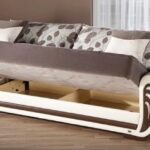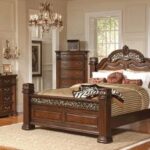7 Home Design Tips Based on Your Child’s Personality and Interests
7 Home Design Tips Based
7 Home Design Tips Based on Your Child’s Personality and Interests

Ask any parent and he or she will tell you the same thing—no matter who you are, how old your child(ren) are, or how long you’ve been a parent—your life is largely dictated by the little humans you raise or bring into the world. And that is true in all areas of life, from the way you clean your house to the items you put inside it (and everything in-between).
Depending on how old your kids are, how they act, what they are into, and how they interact with the world around them says a lot about how you create your space. So, whether you’re a new parent or seasoned veteran, here are seven home design tips based on your child’s personality.
If You Have a Wild Child
You know you have a ‘Wild Child’ if more often than not, you’re answering the phone hesitantly, wondering if it’s a call from the nurse at school or worse, the emergency room reporting your kid’s latest accident.
Yep, you’re the parent who is often freaking out over your child’s safety because you know he/she is going to be non-stop in every game, activity, or even school day. And while this can be pretty stressful at times, this wild, bold, and brave personality is what makes your child so special.
-
This can be anywhere from mobility around spaces (extra room for running, throwing, and doing gymnastics) or it can also be intentionally-crafted spaces that provide an outlet for the endless activity (for example, a mini wall for climbing or a bunk bed that doubles as an indoor playset). It’s also a good idea to consider where your valuable or special items are (aka: hopefully nowhere in reach!).
And as you design the inside of your home, consider the outside as well. How can you use outdoor spaces and lawns/yards for everything that can’t be easily controlled in the house?
-
02of 07
If You Have a Sensitive Soul
If you have a child who’s empathetic, passionate, and often emotional in difficult situations, then chances are, you probably have a ‘Sensitive Soul.’
Sensitive Souls feel everything far deeper than most and this is both a blessing and a curse. On one hand, these children are the first to notice the feelings of others and connect to them. But on the other hand, these children are often taken advantage of or hurt by the littlest things.
This can look like a special room where comfort is the priority (read: blankets, pillows, comfy chairs, bean bags, and low lighting) or it can simply be a part of the house that is dedicated to their sensory needs. Big couches conducive to snuggling or chairs by windows are great for this because they encourage connection or disconnection to help your emotional child hit the ‘reset’ button.
If You Have a Deep-Thinker
You know you have a ‘Deep Thinker’ if your child is highly analytical, calculated in his/her approach, or fascinated by the ‘what if?’ or ‘why?’ type of questions. This can translate to being interested in academics, too, and if that’s the case, you’ll want to consider geometrically-driven design tips based on your child’s personality and left-brain preferences.
Because academics are so important to your Deep Thinker, you want to make sure that this space is distinctly separate and different from other areas of the house. Perhaps it’s a desk that lives outside of your child’s room, or maybe it’s a corner of the kitchen where your child can be connected yet separated from the noise.
As you plan this space, consider how you can make it virtually distraction-free and filled with all of the needed supplies and décor to promote the higher-level investigation he/she is drawn to. For example, covering the walls with inspirational content posters and make sure everything from the basic utensils to the supplemental reading materials are within reach.
If You Have a Social Butterfly
If you have a ‘Social Butterfly’ the passion to connect with others is apparent in every situation and conversation. Your child loves to engage with other people and will find every excuse to participate in dialogue (even at the most inappropriate times).
From the shared living room (with couches that include multiple guests) to the bedroom with chairs and bean bags for multiple sleepover guests, having spaces that are naturally social will fill this little butterfly’s cup.
If You Have a Shy Human
You know you have a ‘Shy Human’ if you feel like you’re often pulling teeth to get him or her to engage, speak up, or be an active participant in the conversation. While this isn’t bad by any means—introspection is not a negative trait!—it does make it challenging to know how to fill this kiddo’s needs.
Sifting through the best design tips based on your child’s personality can be challenging when your child is shy. You may ask yourself, But what does my son/daughter even like?
The answer is spaces that honor the shyness: little nooks and crannies that allow for a safe haven or escape from the outside world. A Shy Human loves to be introverted, to withdraw, and to feel at home in his/her isolation. Creating spaces that help create that (secret rooms, re-imagined closets, or ‘calming corners’) are a must.
If You Have a Sports Fanatic
If your child is athletic, super into the latest and greatest in sports, and often found in front of the TV catching the games or recent highlights, you probably have a Sports Fanatic. And beyond, of course, adding sports designs and décor to the space, you’ll want to design your home around this passion.
For example, if your child is big on hockey, you can create a mini platform for practicing stickhandling (because let’s face it, you can’t build an in-home rink!). Or, if your daughter is big on softball, you can attach a batting stick to a tree for independent practice. Whatever your child is into, make sure that it’s a big part of your home… and thus, his/her life!
If You Have a Creative Kiddo
If your child is huge on music, arts, or theater, you probably have a Creative Kiddo. What sets this child apart is the excitement around anything right-brained and naturally, you should try to design your home around this.
For example, create a mini-studio for your child to sing, play drums, or draw pictures. Build a desk for sketching and watercolor. Make a wall of your home chalkboard for doodles or set aside a surface to display pictures or posters.
Whatever your Creative Kiddo is into, make sure that you are highlighting it, celebrating it, and designing with a focus on it in all spaces of your home.
source : thespruce




